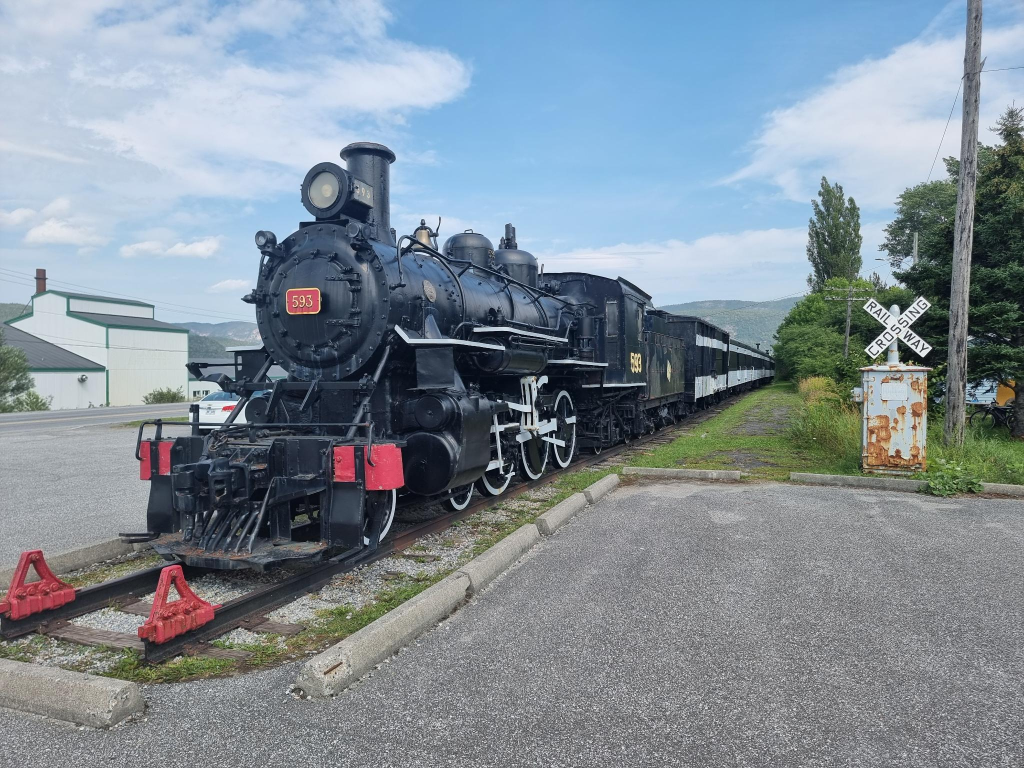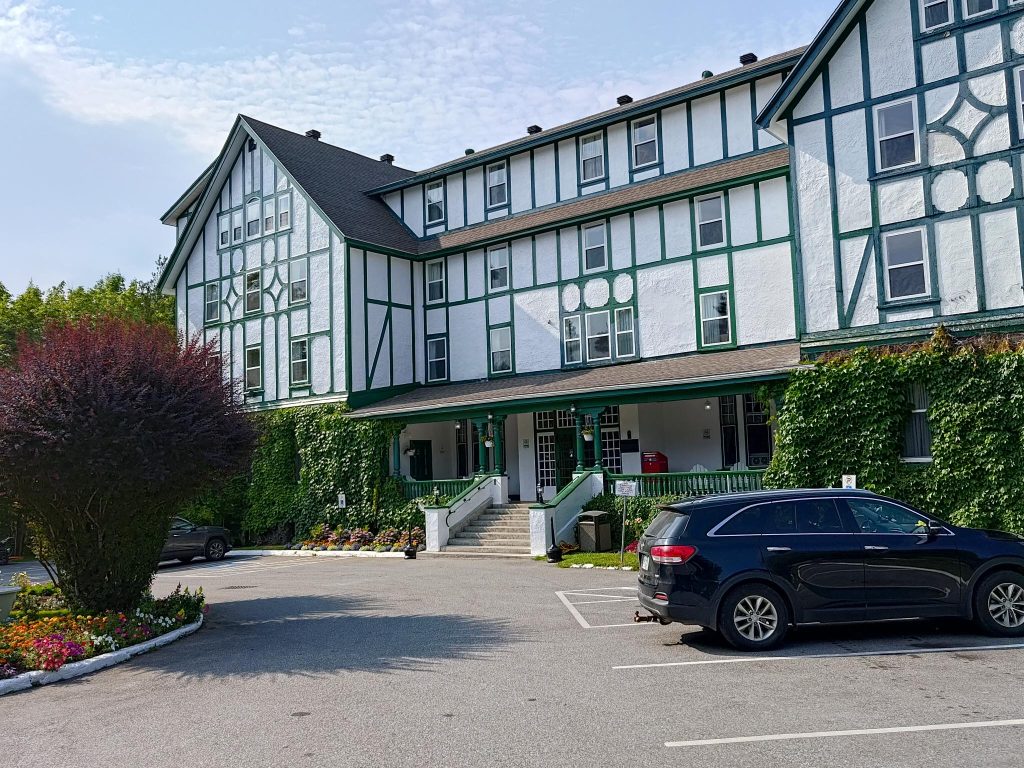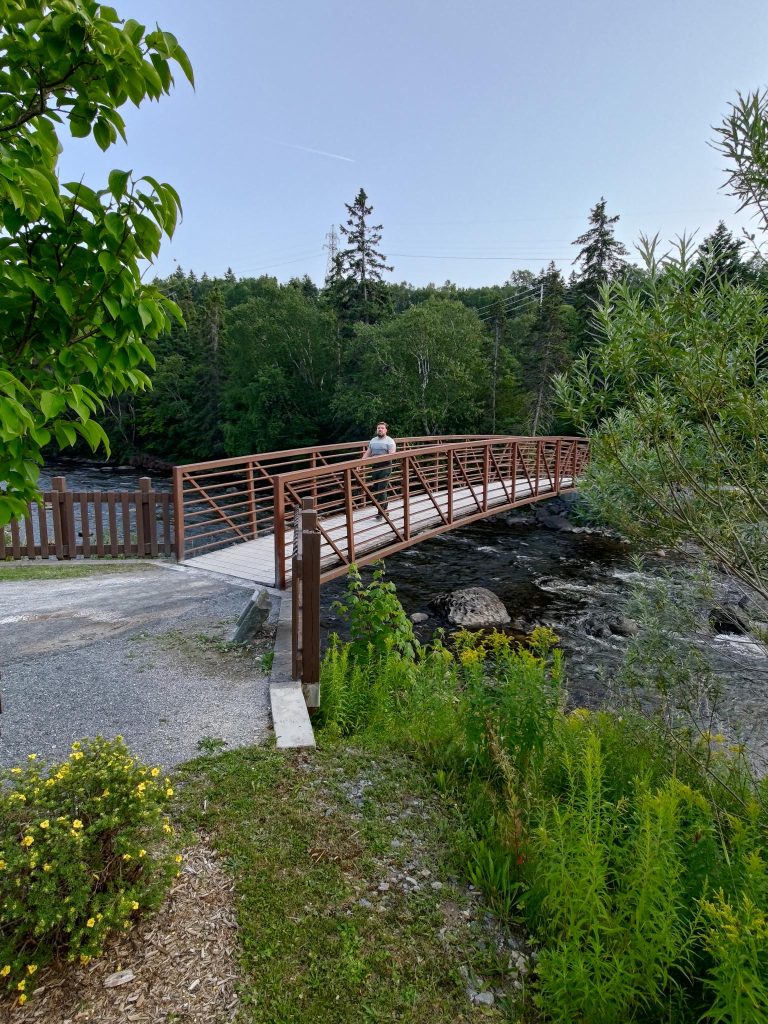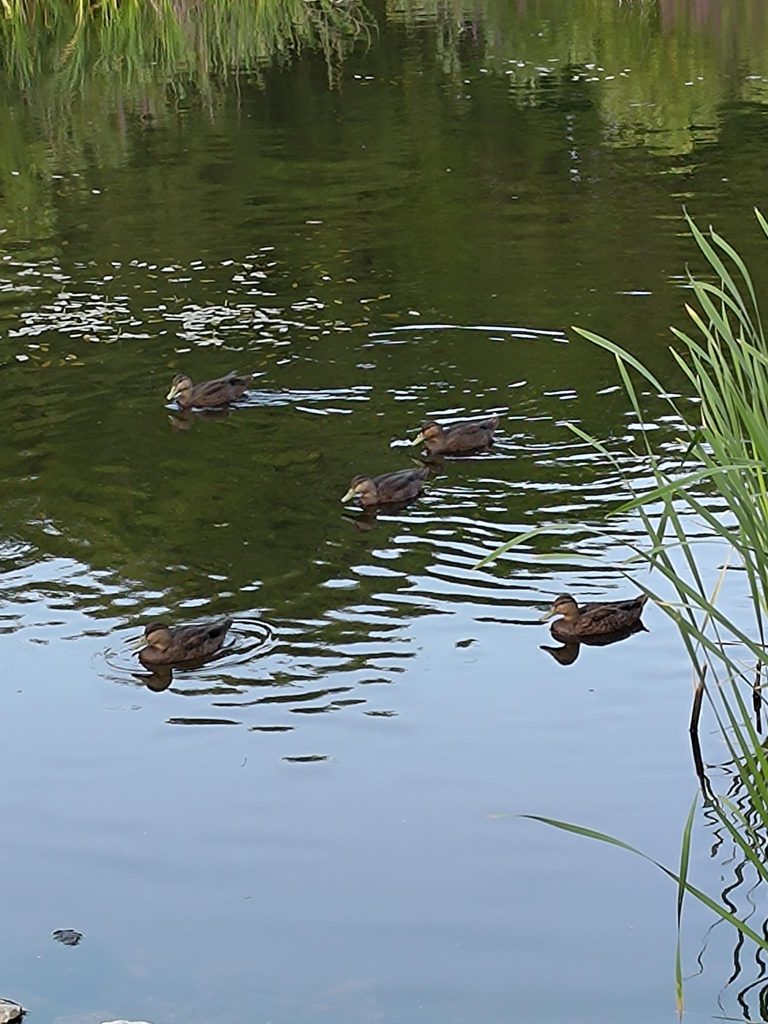
In terms of our family history, Corner Brook was a regular port of call for my father-in-law Paddy (1911 – 1989) in the 1930s. He was an engineer on a freighter that was taking paper somewhere, possibly New York. He was also taking bananas somewhere else. Yes, it was a pity that someone did not listen carefully enough to record the details of these actions, although additional research could possibly find more facts.
The distance between Genevieve Bay and Corner Brook is about 340 km, which takes about 4 hours (plus stops) to drive. While one could call the scenery attractive, it is also repetitive. There is not much variation to see along the route. Before officially arriving at Corner Brook, we paused at the Humbermouth railway station, home of Newfoundland railways locomotive 593. It was built at the Baldwin works in Philadelphia, and entered service in 1921. It retired in 1957.

The rail museum is yet another Newfoundland museum that has not entered the modern age. They expect people to pay entry fees (and everything else) in cash, which is something I refuse to do.
Corner Brook was a small community on the Humber Arm of the Bay of Islands in Western Newfoundland. A pulp and paper mill put Corner Brook on the map. Construction started in 1923 and it was completed in 1925. New Westminster, where I come from, also has a paper mill, without pulp production dating from 1922. Both are now owned by Kruger.
Sawmilling had been an important activity in the Bay of Islands starting in the 1860’s. The Newfoundland railway provided a reliable transportation link with the rest of Newfoundland, starting in 1888. The area, and Newfoundland more generally, held vast expanses of forests. These were useful to fuel the growth of newspapers in Europe and North America. The mill was a major economic benefit pumping millions of dollars into the economy, encouraging the development of new skills, increasing employment, generated new services and stimulating building construction.
Perhaps the most negative impact of pulp production was their sulpher smell. That said, there was no unpleasant odor in Corner Brook.
For me, Corner Brook was a relaxing town, admittedly with some traffic challenges. I am sure the locals have no trouble navigating its urban idiosyncrasies, but the streets have unexpected curves.
I enjoyed the diner where we chose to eat. Basic food, which is what I prefer.
We stayed at the Glynmill Inn, a registered heritage structure in Tudor revival style, with 78 guest rooms. It was designed and built in 1923 by Nova Scotia architect Andrew Cobb (1876 – 1943) to house employees and senior staff during the construction of the paper mill. It was converted into a hotel in 1925. It is adjacent to Glynmill pond, which provided an opportunity to become acquainted with the local wildlife.

As I write this post, I am listening to Bay (of Islands) FM at 100.1. It is 07:00 in Corner Brook, but already 11:30 here in Norway. It’s studio is located at the Inn.




I’m old enough that I recall the steamers clearly and have to visit whenever I am close to an operational one.
Every year, the Union Pacific does a tour with two of their biggest. Was disappointed we will be gone when one passes our area.
My home town is in the heart of what was a paper-making area and the sulfur smell is a familiar one. Fortunately, the prevailing westerlies mean we only were “treated” occasionally.